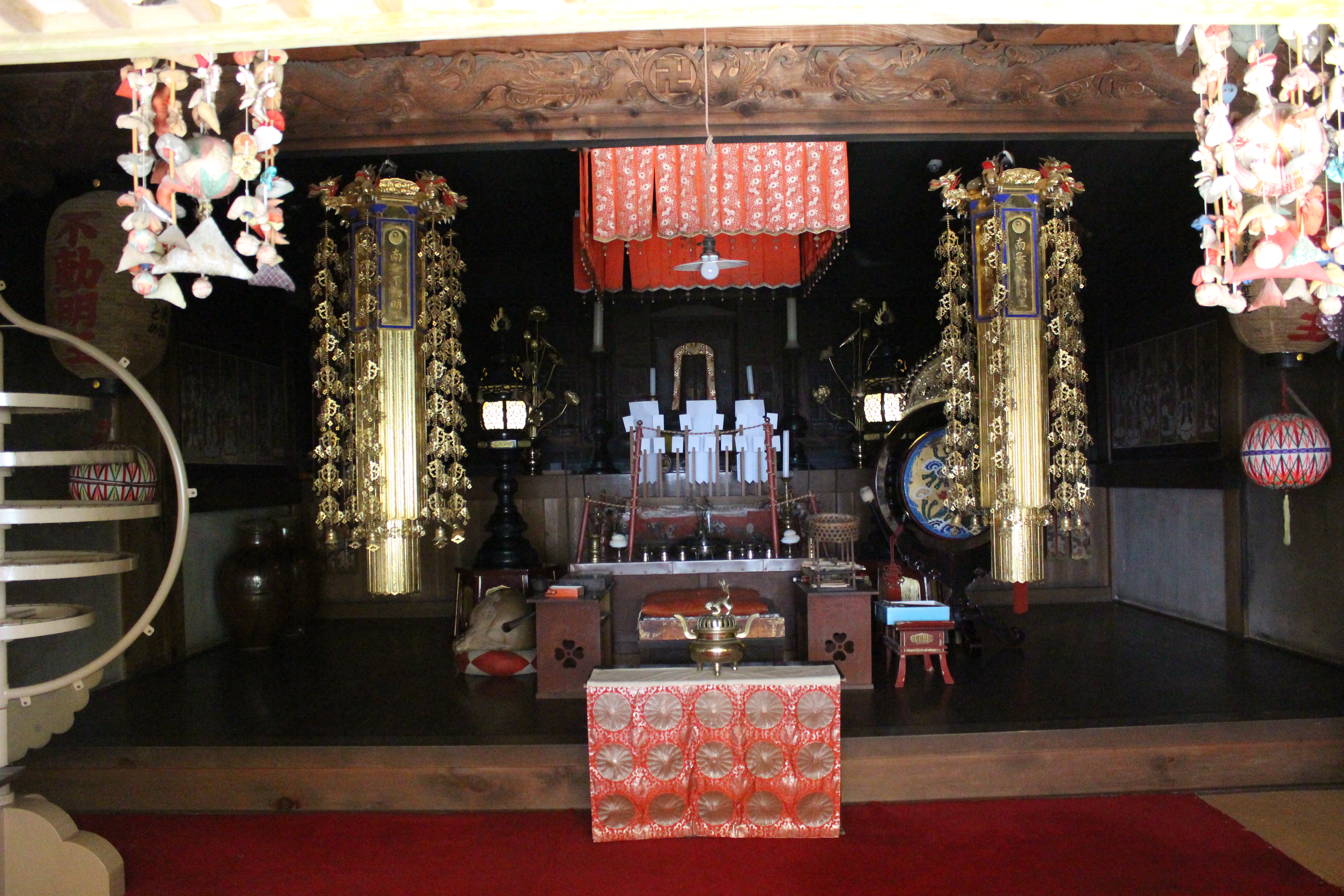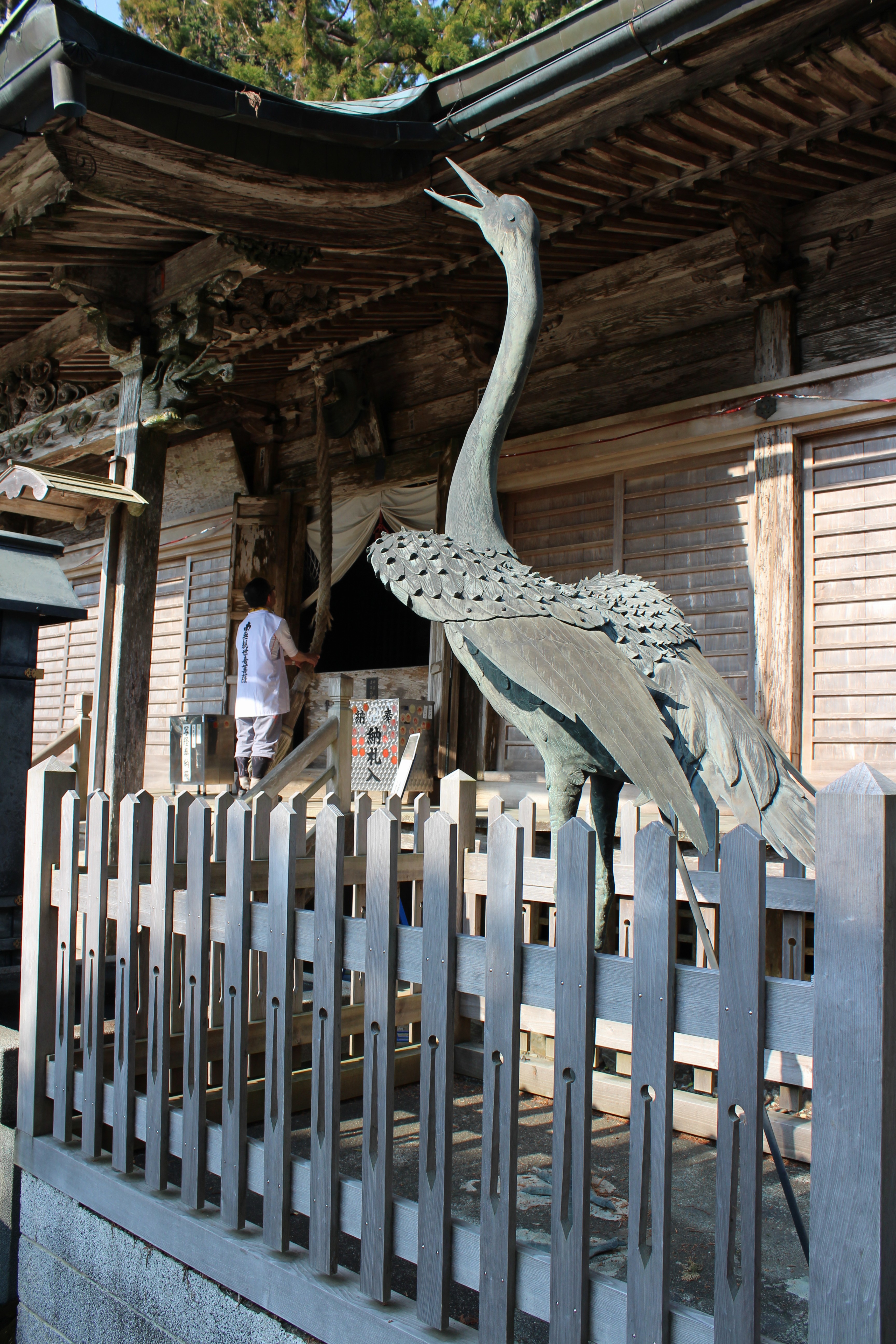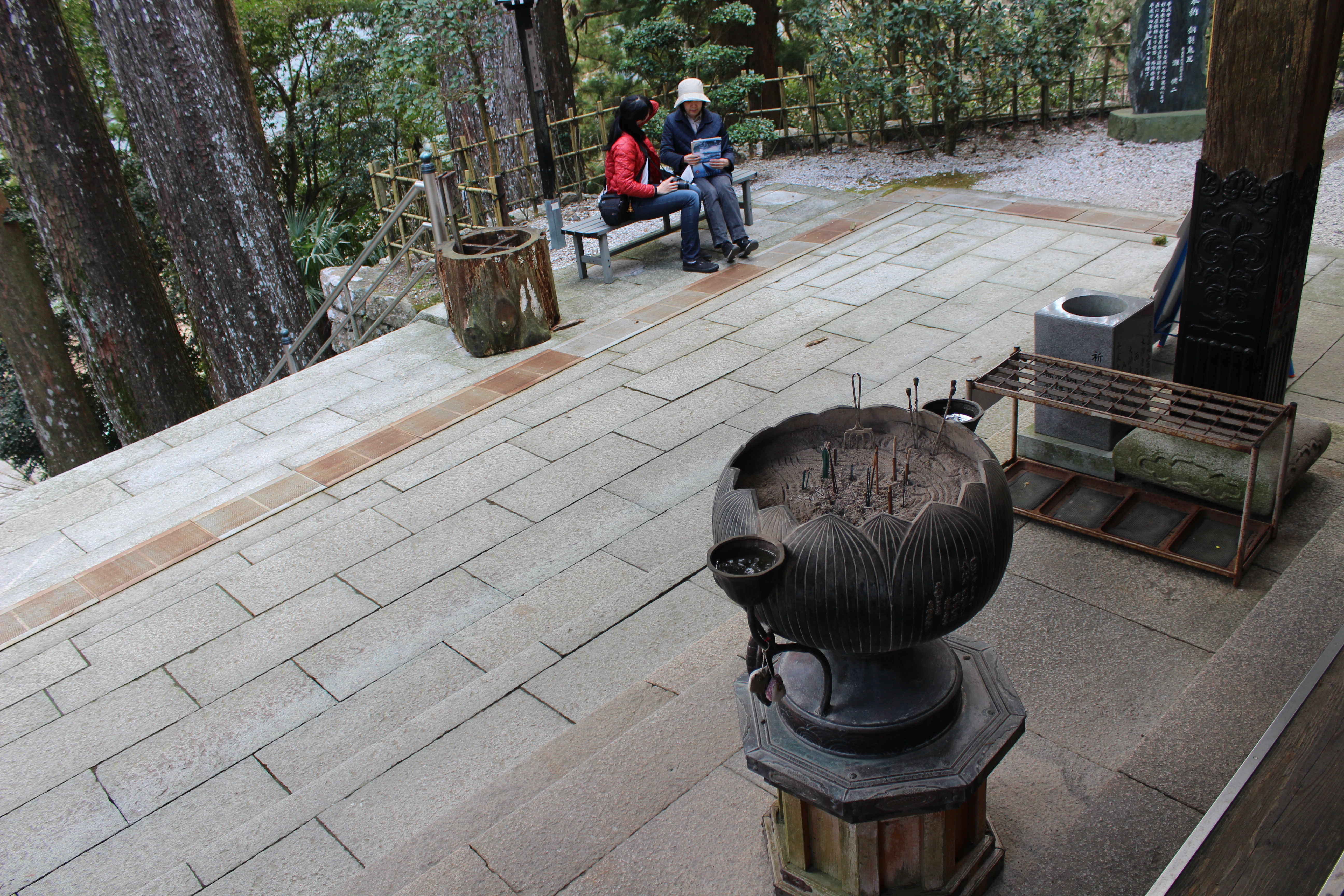Daigongen Shrine or Shrine for the Cat God (temples 20 – 22)
Kakurinji (temple 20) and Taiyūji (temple 21) are two mountain temples separated by a valley and with the Naka River flowing through them. Huge cedar trees, moss covered rocks and grounds, and crisp and clear air is all-present in the incredible silence of this altitude. I love mountain temples!
Walkway to the entrance gate of Kakurinji
The Hondo or main hall of Kakurinji
Legend tells that two cranes once protected a statue of Jizo Bosatsu with their wings. Kōbō Daishi carved a larger statue of Jizo Bosatsu after this event
Inside of the Hondo where the main deity Jizo Bosatsu resides
Two cranes are still protecting the Hondo or main hall
The Naka River with crystal clear water
Not many rivers in Japan are free to flow. Concrete walls control many riverbeds.
On the mountain temple Tairyūji, Cedar trees are very powerful and create a mystical atmosphere.
In Tairyūji I met Yuko’s friend Hiroko-san and her daughter. They came up with a cable car to meet me. Hiroko-san brought me another hat since the black one was too big for me. I gave her the black one instead, which fitted her perfectly.
Just by pure coincidence, I met Hiroko-san and her daughter again on a road in the valley. They were driving to see the Daigongen Jinja, a Shinto Shrine of the Cat God. They invited me to go with them.
The color red is typical for Jinjas. There are several shrines in Japan for the veneration of cats. Most probably, cats are venerated because of their night vision. Here I am standing beside the statue of the Cat God, which is said to have curative power. If one has an ailment, one rubs the sick body part against the cat and the body part is healed. Pieces of papers containing people’s wishes are attached to the Cat God and the fir tree behind me. This custom is also done in other temples.
The wooden box in front of the Cat God is for money donations
The posture of the cat means “come in” (lit. maneki-neko, inviting cat) and is often used in shops to welcome customers in.









